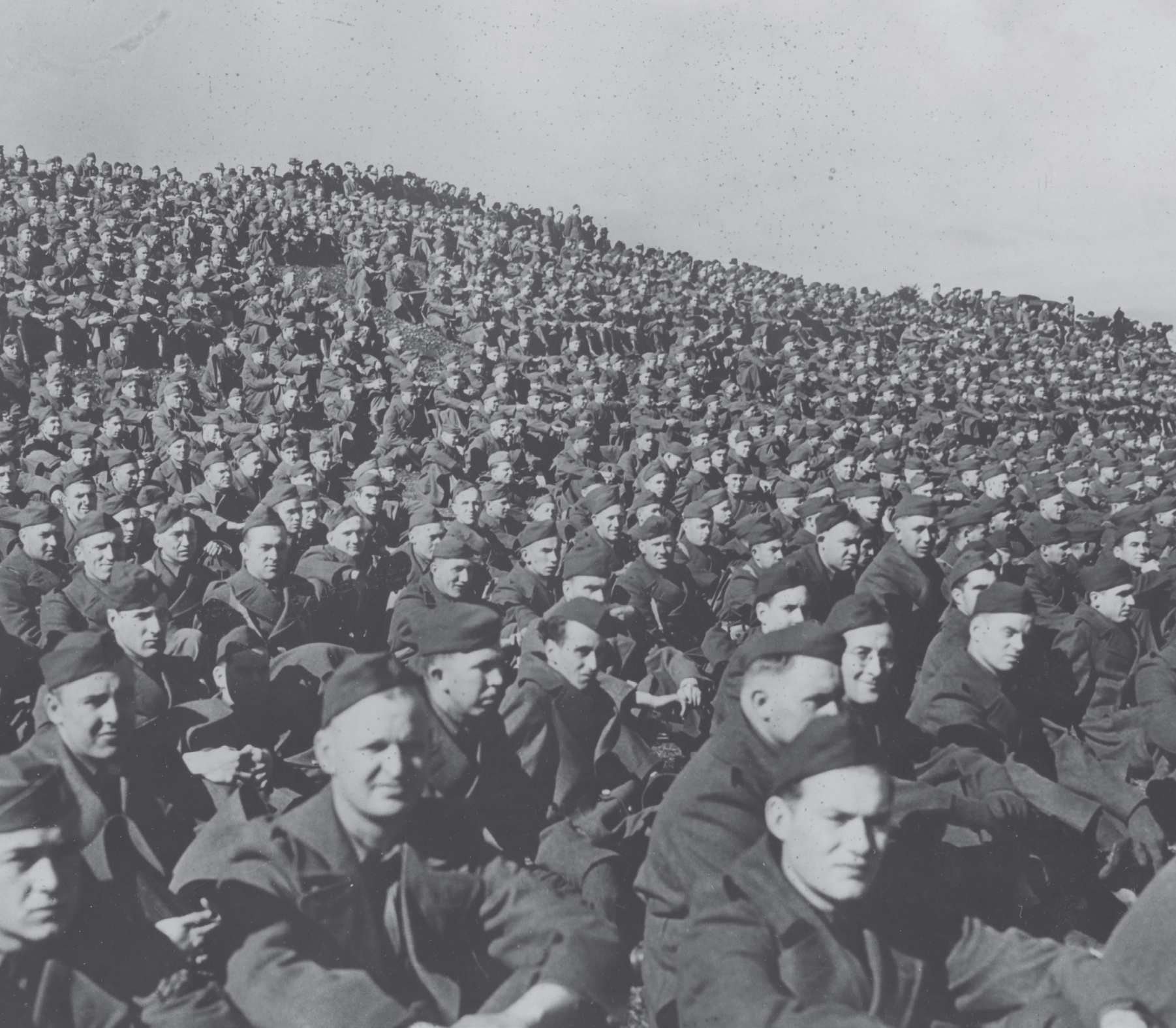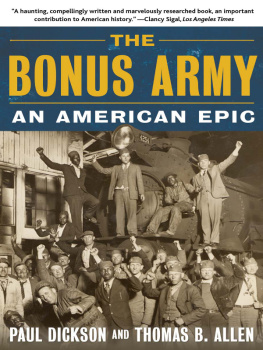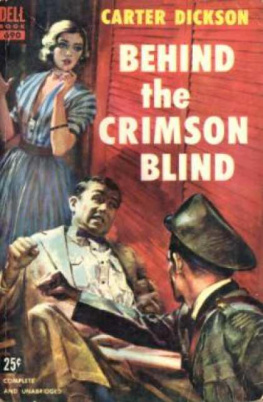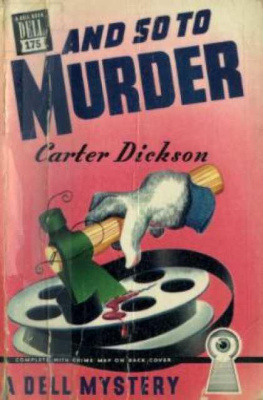Paul Dickson - The Rise of the G.I. Army, 1940-1941
Here you can read online Paul Dickson - The Rise of the G.I. Army, 1940-1941 full text of the book (entire story) in english for free. Download pdf and epub, get meaning, cover and reviews about this ebook. year: 2020, publisher: Grove Atlantic, genre: History. Description of the work, (preface) as well as reviews are available. Best literature library LitArk.com created for fans of good reading and offers a wide selection of genres:
Romance novel
Science fiction
Adventure
Detective
Science
History
Home and family
Prose
Art
Politics
Computer
Non-fiction
Religion
Business
Children
Humor
Choose a favorite category and find really read worthwhile books. Enjoy immersion in the world of imagination, feel the emotions of the characters or learn something new for yourself, make an fascinating discovery.
- Book:The Rise of the G.I. Army, 1940-1941
- Author:
- Publisher:Grove Atlantic
- Genre:
- Year:2020
- Rating:3 / 5
- Favourites:Add to favourites
- Your mark:
- 60
- 1
- 2
- 3
- 4
- 5
The Rise of the G.I. Army, 1940-1941: summary, description and annotation
We offer to read an annotation, description, summary or preface (depends on what the author of the book "The Rise of the G.I. Army, 1940-1941" wrote himself). If you haven't found the necessary information about the book — write in the comments, we will try to find it.
The Rise of the G.I. Army, 1940-1941 — read online for free the complete book (whole text) full work
Below is the text of the book, divided by pages. System saving the place of the last page read, allows you to conveniently read the book "The Rise of the G.I. Army, 1940-1941" online for free, without having to search again every time where you left off. Put a bookmark, and you can go to the page where you finished reading at any time.
Font size:
Interval:
Bookmark:
Think Tanks
The Electronic Battlefield
Chow: A Cooks Tour of Military Food
The Dickson Baseball Dictionary
War Slang: American Fighting Words and Phrases from the Civil War to the Gulf War
The Official Rules
Sputnik: The Shock of the Century
The Bonus Army: An American Epic (with Thomas B. Allen)
A Dictionary of the Space Age
Bill Veeck: Baseballs Greatest Maverick
Courage in the Moment: The Civil Rights Struggle, 19611964
Leo Durocher: Baseballs Prodigal Son

Copyright 2020 by Paul Dickson
Jacket design by Gretchen Mergenthaler
Jacket photograph: Artillerymen roll a big howitzer into
mock battle during the Carolina Maneuvers in Heath Springs,
North Carolina, October 30, 1941. (Authors collection)
All rights reserved. No part of this book may be reproduced in any form or by any electronic or mechanical means, including information storage and retrieval systems, without permission in writing from the publisher, except by a reviewer, who may quote brief passages in a review. Scanning, uploading, and electronic distribution of this book or the facilitation of such without the permission of the publisher is prohibited. Please purchase only authorized electronic editions, and do not participate in or encourage electronic piracy of copyrighted materials. Your support of the authors rights is appreciated. Any member of educational institutions wishing to photocopy part or all of the work for classroom use, or anthology, should send inquiries to Grove Atlantic, 154 West 14th Street, New York, NY 10011 or permissions@groveatlantic.com.
FIRST EDITION
Published simultaneously in Canada
Printed in Canada
This book was set in 11-pt. Janson Text LT by Alpha Design & Composition of Pittsfield, NH.
First Grove Atlantic hardcover edition: July 2020
Library of Congress Cataloging-in-Publication data is available for this title.
ISBN 978-0-8021-4767-7
eISBN 978-0-8021-4768-4
Atlantic Monthly Press
an imprint of Grove Atlantic
154 West 14th Street
New York, NY 10011
Distributed by Publishers Group West
groveatlantic.com
20 21 22 23 10 9 8 7 6 5 4 3 2 1
To the memory of Thomas B. Allen and James Srodesgreat, good friends and accomplished fellow writersboth of whom were constantly at my elbow helping and encouraging me with this book but who would not live to see it published.

So sorry was the state of the U.S. Army in 1939 that had Pancho Villa been alive to raid the southwestern United States it would have been as ill-prepared to repulse or punish him as it had been in 1916.
Carlo DEste, Patton: A Genius for War
World War II was the largest and most violent armed conflict in the history of mankind. However, the half century that now separates us from that conflict has exacted its toll on our collective knowledge. While World War II continues to absorb the interest of military scholars and historians, as well as its veterans, a generation of Americans has grown to maturity largely unaware of the political, social, and military implications of a war that, more than any other, united us as a people with a common purpose.
Michael P. Stone, Secretary of the Army, 1992
Far-flung ordinary men, unspectacular but free, rousing out of their habits and their homes, got up early one morning, flexed their muscles, learned (as amateurs) the manual of arms, and set out across perilous plains and oceans to whop the bejesus out of the professionals.
Norman Corwin, On a Note of Triumph,
his hour-long CBS Radio broadcast
after victory in Europe, May 8, 1945
CONTENTS
The United States of America had let down its defenses. In contrast to the four million Americans armed by the end of World War I, by 1935 the United States Regular Army had declined to 118,750 men, which, as Army Chief of Staff Douglas MacArthur noted, could be crowded into Yankee Stadium and he added that it would be relatively helpless in the event of a foreign invasion.
The situation was little improved on September 1, 1939, the day on which Germany invaded Poland and a day when the United States Army was smaller than that of Portugal, with fewer than 200,000 men. American troops were still learning obsolete skills and preparing for defensive warfare on a small scale rather than for a two-ocean war overseas. Most of the Armys divisions were staffed at half-strength and scattered across numerous posts. Their equipment was also obsolete, and their reliance on horses and mules was anachronistic. The Army officer corps harbored many not suited to lead troops into combat.
In the latter part of the 20th century, many Americans either never knew or forgot that a vast American citizen army had been created prior to the attack on Pearl Harbor. Also largely forgotten was that during those 828 days between the beginning of the war in 1939 and the day of infamy, December 7, 1941, a fully functioning peacetime military draft system had been put in place and that after a purge of senior officers, a new cohort of senior officers was rising through the ranks, which would eventually lead the nation and its allies to victory. What is more, this new peacetime army was given a dress rehearsal for the war ahead in the form of three massive military maneuvers in the spring, summer, and fall of 1941, which ended just a few days before the attack on Pearl Harbor.
Heading into the third decade of the 21st century, this element in the narrative of the Second World War has moved farther in the margins of history. I base the assertion that all this has been lost or forgotten in recalling the World War II narrative on personal experience. Here is but one example: when first I began researching the extraordinary but largely untold story of the 1940 military draft and the 1941 maneuvers, I mentioned the prewar draft to several people at a Fourth of July party and was corrected by a well-read man who had served in the U.S. Air Force and fancied himself a student of American military history. He was convinced I was wrong and insisted that the nation in 1940 was still mired in a deep period of isolation and could not possibly have mobilized before the war. He advised me to check my facts.
The primary question I wanted to research was how the United States had been able to create a well-led, mobile army that was in place by the time of the attack on Pearl Harbor. Beyond that, I wondered how the U.S. Army could have been ready to field infantry and armored divisions, made up in large part with draftees and volunteers, to stand up to Adolf Hitlers Storm Troopers and Panzer divisions on the ground, first in North Africa and then Europe.
The roots of the answers could be traced to events a decade before Pearl Harbor. Henry L. Stimson was a leading member of what was once referred to as the Establishment. Born into a wealthy New York family in 1867, he graduated from Yale and then Harvard Law School. A Republican, Stimsons career in public service began in 1906, when President Theodore Roosevelt appointed him to the position of U.S. attorney for the Southern District of New York, where he became known for his vigorous prosecution of antitrust cases. Stimson served as secretary of war for President William Howard Taft in 1911, served as an artillery officer in the U.S. Army during the First World War, and in 1929, President Herbert Hoover made him his secretary of state.
Next pageFont size:
Interval:
Bookmark:
Similar books «The Rise of the G.I. Army, 1940-1941»
Look at similar books to The Rise of the G.I. Army, 1940-1941. We have selected literature similar in name and meaning in the hope of providing readers with more options to find new, interesting, not yet read works.
Discussion, reviews of the book The Rise of the G.I. Army, 1940-1941 and just readers' own opinions. Leave your comments, write what you think about the work, its meaning or the main characters. Specify what exactly you liked and what you didn't like, and why you think so.











